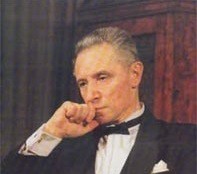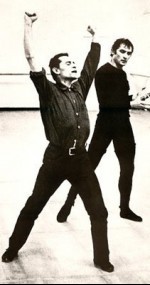| Maestro Yuri GrigorovichChoreographer
Yuri Grigorovich is considered to be the greatest living choreographer in the world of ballet today. His ballets dominate the repertory of contemporary works, and his stagings of the classic ballets reflect his personal taste arid his often-stated conviction that drama must always infuse and be expressed through dancing.
He breaks with tradition, yet he himself is rooted in the traditions of classic ballet, by birth and upbringing. He has acute awareness of his inheritance, and of the vital contribution that is made to the performances of today by the guidance of great artists of an earlier generation. On all the Bolshoi‘s many tours, they are accompanied by such guardians of the classic school as the ballerinas Marina Semyonova (born 1908), Galina Ulanova (born 1910) and Raissa Struchkova (born 1925). To them is entrusted the coaching of young ballerinas, and even established dancers return for help and advice.
Yuri Nikolaievich Grigorovich was born in what was then Leningrad on January 2nd, 1927. His uncle George Rozai, was a character dancer who appeared with Diaghilev‘s Ballet Russe and his mother, Klaudia Rozai, trained at the ballet school with Semvonova. Many of his family were circus artists and young Yuri was fascinated by the world of the circus, but soon lost his heart to the dance. He describes it as "a love affair that has lasted all my life."
He trained at the Leningrad Choreographic School and along with the other pupils was evacuated to Perm during World War II. He tried to run away (by canoe!) to get to the front but was brought back and eventually graduated in 1946. He joined the Kirov Ballet where he excelled in character roles. His favorite was that of the virtuoso warrior leader Nurali, who can be so sensational in the last act of The Fountain of Bakhchisarai. But he was already, in his formative years, keen to try his hand at choreography and in 1956 was allowed to arrange a ballet to Glinka‘s Valse-Fantasie for a graduation performance at the Kirov School.
His first major work, undertaken despite the fact that another version already existed in Moscow, was The Stone Flower, to the Prokofiev score which was first performed at the Kirov on April 27, 1957. It marked the first collaboration between Grigorovich and the artist Simon Virsaladze, a man of great culture from Tbilisi, who was to design all his subsequent ballets. In addition to their working partnership they also were the greatest of friends, a relationship that was only broken by Virsaladze‘s death in 1989, at the age of eighty.
Grigorovich was named ballet master at the Kirov in 1962 but subsequently transferred to Moscow and to the Bolshoi in 1964. Grigorovich was Artistic Director of the Bolshoi Ballet for the following 30 years, a tenure in ballet rivaled only by the founding director of the New York City Ballet, George Balanchine. During Grigorovich‘s term at the Bolshoi, he staged Spartacus by Khachaturian (1968), Ivan the Terrible by Prokofiev (Moscow, 1975; Paris, 1977), Angara by Eshpai (1876), Romeo and Juliet bv Prokofiev (Paris, 1978; Moscow, 1979), The Golden Age by Shostakovich (1982). Yuri Grigorovich revised classical masterpieces for the Bolshoi Ballet: The Sleeping Beauty (1963), The Nutcracker (1966), Swan Lake (1969) by Tchaikovsky; Raymonda by Glazunov (1984), La Bayadere (1991), La Fille Mal Gardee (1993) by Hertel, Don Quixote (1995) by Minkus.
Copyright © 2000-2005 www.sara-artists.com. All rights reserved. | |
 Mariinsky Theatre:
Mariinsky Theatre:  Mariinsky-2 (New Theatre):
Mariinsky-2 (New Theatre):  Mariinsky Concert Hall:
Mariinsky Concert Hall: 


